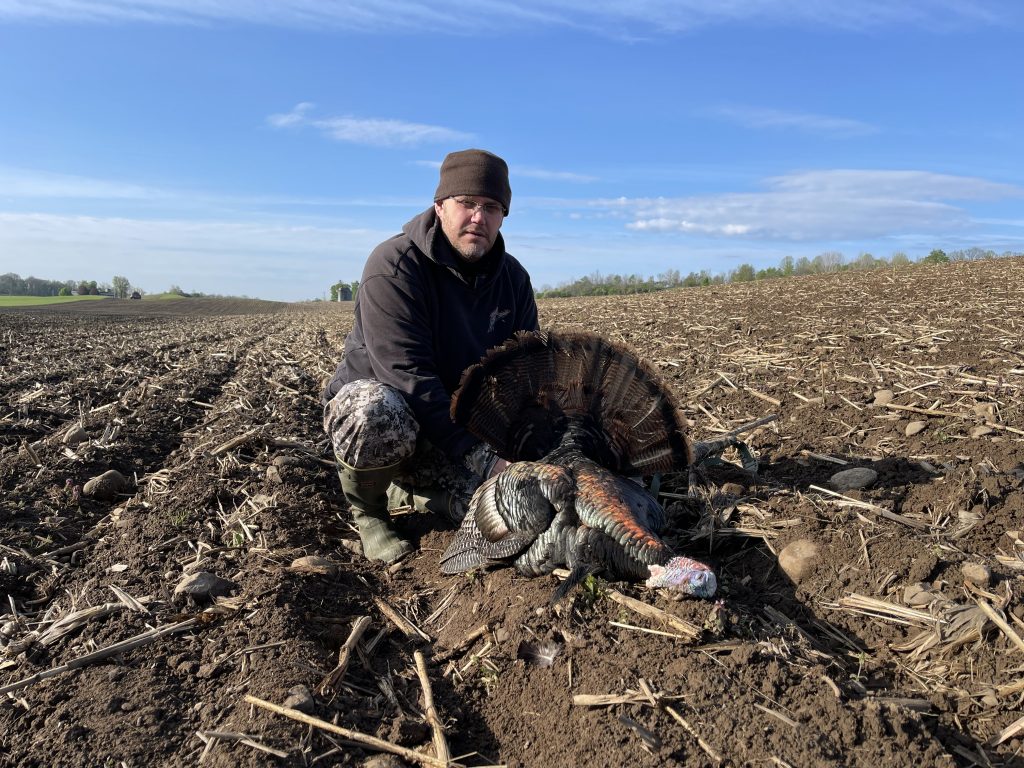Onset of an Addiction
Over the last couple of decades my hunting adventures have primarily focused on chasing whitetails with some turkey hunting sprinkled in.
Due to the lack of a turkey population on the farms I had permission to hunt, I never got into it. That quickly changed in recent years. I now eagerly look forward to the first of May, the start of New York’s turkey season, just as much as I do to opening day of deer season. After several failed attempts, in which I had no idea of what I was doing, three years ago I was finally able to harvest my first longbeard. My success was aided by learning some valuable information and a couple of tactics that I have continued to use. Most of them are well known tools in the arsenal; however, I made some slight variations.
One of the biggest keys to my success was determining where the birds were roosting the night before the hunt. Throughout the first week of May, my neighbor and I were able to determine that the birds liked roosting on a specific ridge. This can be done two ways, either hearing them gobble in the evening or by way of trail cameras. This can also be a great way to get your kids into turkey hunting. Both of my boys like to drive around the hunting area with me scouting for turkeys, sometimes stopping for ice cream afterward.
One spin that I put on using locator calls came from an experience while I was out scouting one night. We happen to have a large pond nearby and Canada geese commonly use it as a nighttime roosting spot. After not having good luck getting turkeys to respond to the typical owl hoots and turkey calls, I noticed something to which I hadn’t given much thought. When the geese on the pond would get riled up, honking ad nauseam, the toms on the roost would get fired up, too – the sound frequencies of a goose honking and turkey vocalizations are similar. I started using a Canada goose call to mimic this and immediately could pinpoint roost trees. Paying attention to the natural surroundings can be beneficial in learning new tactics to employ.
Don’t be afraid to change your strategy as your season progresses and you experience new things.
After locating some birds, we set out the next morning to a ground blind we had placed on the edge of a freshly plowed field. Earlier in the season, we had observed birds work their way across this field from the ridge they were roosted on to another set of woods, stopping along the way to scratch through the dirt. We also changed up our decoying technique as well, placing only a lone hen decoy about 30 yards in front of us to attract the toms. We found the birds were timid around the jake decoy we had been putting out alongside the hen decoy. Don’t be afraid to change your strategy as your season progresses and you experience new things.
Right after first light, a tom flew down and started making his way across the field, stopping to gobble along the way. He was coerced into coming within range by my neighbor’s enticing use of mouth and slate calls, along with the hen decoy. Finally, it was up to me, but my mind rushed back to earlier in the season when I had missed. Raising the 12-gauge shotgun up to my shoulder and putting the front site just below the head of the gobbler, I took a deep breath and squeezed the trigger.

After seeing the bird flop, a feeling of accomplishment came over me; I had finally done it. The 21-pound longbeard had a 9-inch beard with ¾-inch spurs. The whole hunt took about 10 minutes to execute, but the preparation and planning was what made it so successful.
CONNECT WITH US
National Wild Turkey Federation
770 Augusta Road, Edgefield, SC 29824
(800) 843-6983
National Wild Turkey Federation. All rights reserved.
